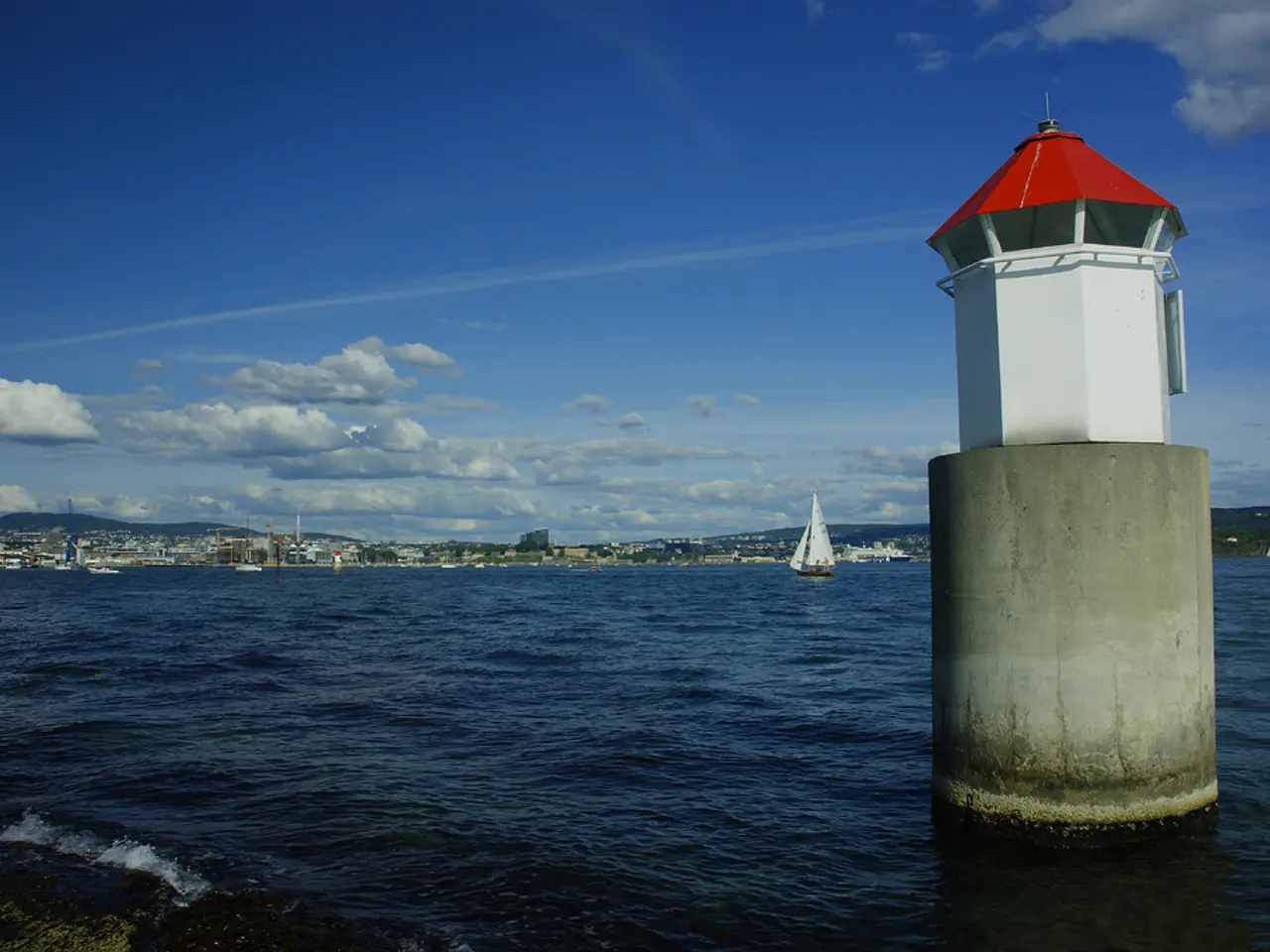Celebrating Navigational Pillars: National Lighthouse Day Recognizes Iconic Coastal Beacons throughout the United States
Lighthouses, centuries-old navigational tools, have played a crucial role in marking harbor entrances and warning ships of coastal hazards. These iconic structures continue to captivate visitors and serve as symbols of early American federal infrastructure, as well as cultural landmarks preserving historic maritime heritage.
One of the most notable lighthouses in the United States is the Cape Henry Lighthouse in Virginia, completed in 1792. It was the first federally funded lighthouse in the U.S. and guided ships navigating the Chesapeake Bay and Atlantic Ocean. Another historic beacon is the Sandy Hook Lighthouse in New Jersey, declared a National Historic Landmark in 1964 and one of the oldest operating lighthouses in the U.S.
In the Great Lakes region, several lighthouses hold significance. The Round Island Lighthouse on Mackinac Island and the Old Mackinac Point Lighthouse in Mackinaw City are historic markers that draw visitors. The Big Sable Point Lighthouse, famed for hiking access, tours, sunset views, and photography, stands out with its 112-foot black-and-white striped tower.
Up in the Upper Peninsula of Michigan, lighthouses like the Ontonagon Lighthouse, Eagle Harbor Light Station, Copper Harbor Lighthouse, Peninsula Point Lighthouse, and Little Sable Point Lighthouse offer insights into nautical history and scenic vistas.
Chicago Harbor Light is another notable lighthouse that provides a window into coastal history and draws travelers during the summer travel season.
Monthly full moon tours offer a rare chance to explore the Ponce de Leon Inlet Light after dark, while annual events, including National Lighthouse Day and maritime festivals, bring in visitors and raise awareness for ongoing lighthouse restoration efforts.
Boston Light, first lit in 1716 and rebuilt in 1783, is the oldest lighthouse site in the United States and still operates under Coast Guard supervision with a resident keeper. The first National Lighthouse Day was established by President George Washington in 1789, giving federal backing to lighthouse construction and maintenance.
Local preservation groups often organize hands-on work such as painting, landscaping, and basic maintenance for lighthouse preservation. Sharing photos or stories online helps draw new attention to lighthouse preservation. Visitors can tour the Point Arena Lighthouse, stay overnight, or support its preservation through local programs.
Preserving lighthouses is not just about maintaining old buildings; it's about keeping a piece of the American coastline's story alive for generations to come. Before modern navigation existed, the Great Lakes region's Indigenous communities used natural landmarks for orientation. The Ponce de Leon Inlet Light originally featured a first-order Fresnel lens that was visible nearly 20 miles out to sea. Today, the Ponce de Leon Inlet Light serves as a museum and remains one of the country's most intact light stations.
The Point Arena Lighthouse was built in 1908 to replace an earlier tower destroyed in the 1906 San Francisco earthquake. It was among the first in the nation to use reinforced concrete for seismic durability. The Alcatraz Island Light was first lit in 1854 and is the earliest lighthouse on the West Coast. A taller 95-foot tower replaced the original Alcatraz Island Light in 1909 to clear the newly constructed prison. The Alcatraz Island Light became automated in 1963 after the penitentiary shut down and still operates to this day.
National organizations like the U.S. Lighthouse Society and the American Lighthouse Foundation rely on memberships, fundraising, and volunteer support to maintain historic lighthouses and provide educational programs. The Alcatraz Island Light remains a defining feature of the island's historic landscape.
Jennifer Allen, a recognized cruise expert and nationally syndicated journalist, co-founded Food Drink Life, where she shares expert travel tips, cruise insights, and luxury destination guides. Allen's articles are regularly featured on the Associated Press Wire, The Washington Post, Seattle Times, MSN, and more. Her passion for high-end experiences and off-the-beaten-path destinations, exploring the world with curiosity, depth, and a storyteller's perspective, is evident in her work.
In conclusion, these lighthouses, standing tall along the American coastline, serve as a testament to the nation's rich maritime history. They offer not just a glimpse into the past but also a chance to learn, explore, and appreciate the stories they hold. Whether you're a history buff, a photography enthusiast, or simply seeking a unique travel experience, these historic lighthouses are worth a visit.
- Jennifer Allen, a travel expert, co-founded Food Drink Life to share her insights on luxury destinations. Her passion for unique experiences, including historical lighthouses along the American coastline, is evident in her work.
- These lighthouses, not just relics of the past, provide education-and-self-development opportunities as they tell captivating stories about food, lifestyle, travel, and the history of the United States.




